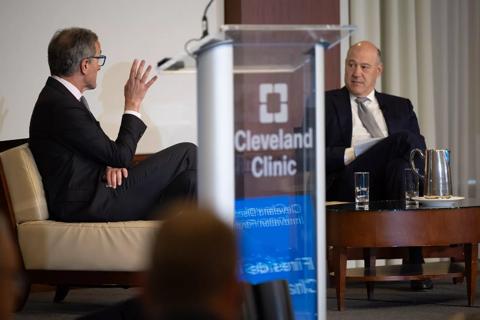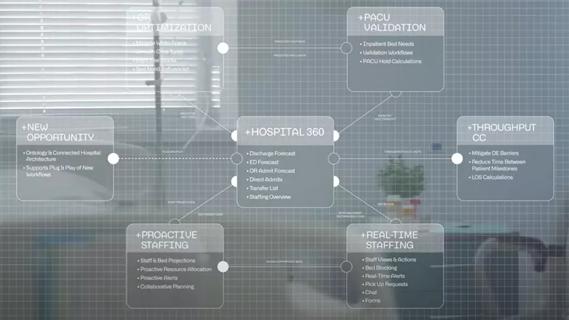Being part of Cleveland Clinic offers growth potential for nurses, says Barbara Yingling

In February 2021, Mercy Medical Center joined Cleveland Clinic, and the health system’s nursing ranks grew by about 1,000. Among them is Barbara Yingling, MAed, BSN, RN, Mercy’s Vice President of Patient Care Services and Chief Nursing Officer, a veteran of critical care nursing and a leader who understands the potential that the change represents.
Advertisement
Cleveland Clinic is a non-profit academic medical center. Advertising on our site helps support our mission. We do not endorse non-Cleveland Clinic products or services. Policy
“What’s exciting to me about being part of the enterprise now is that there are so many colleagues I can reach out to,” says Yingling. “They will help us make decisions and really raise the bar for nursing care and for care delivery here at Cleveland Clinic Mercy Hospital.”
Yingling has been the hospital’s CNO since 2011. In addition to Nursing, she oversees Respiratory Therapy and Pharmacy. Her leadership roles have included assignments as Director of Nursing Staff Development and Assistant Chief Nursing Officer, and she has served as an adjunct faculty member at Malone College.
She earned her Bachelor of Science in Nursing at Walsh College and her Master of Arts in Education and Management at Walsh University.
Mercy shares many quality-of-care nursing values with Cleveland Clinic, Yingling says.
“I’m very proud that over the last two years, we’ve been able to increase our quality metrics here at Mercy, and those metrics reflect our commitment and dedication to continuously improve patient care. We were able to achieve a Leapfrog A grade, and our sepsis mortality is very low. We’re also on our journey to achieve Magnet® designation for nursing excellence, and we’ll submit our application in February 2022. So we have done really well.”
Cooperative efforts are key to that successes, Yingling says. “We’ve really improved our overall shared governance team, and recently completed our first professional practice model. We have done a lot to elevate Nursing’s presence, and we want to continue to do that.”
Advertisement
Yingling’s first management position was at Massillon Community Hospital (closed in 2018), which she left to return to a staff nursing role at Mercy. She hadn’t intended to return to management, but after about a year became energized by the idea of ways in which she could help fuel change.
“I have a critical care background, and had been floating between CCU and the open heart unit. I started seeing ways I wanted to advocate for the nursing staff and for patients,” Yingling says. “Those are the two reasons I get up in the morning — to advocate for the patients and for our employees, our caregivers.”
Time away from management had been good for her, she says, and she returned ready to embrace the most challenging part of the job. “Nursing school provides a foundational framework, but dealing with people tends to be the number one skill you need in management roles,” she says.
“The interpersonal skills are difficult to get in nursing education programs alone,” Yingling says, but she adds that she has been intentional about learning them.
“I’m an avid reader, and I like to read leadership books,” Yingling says. “I really like Crucial Conversations [by Kerry Patterson, Joseph Grenny, Ron McMillan and Al Switzler] and Good to Great [by Jim Collins]. I spend a lot of time and attention on these topics.
“And then if you have peers in these roles, you can learn from them,” Yingling adds. “They can be mentors, whose work you want to emulate, but you can also learn from those whose attributes you would not want to portray. That’s been valuable to me as well.”
One of the key skills of a successful leader is maintaining a cool head in moments of high emotion or when facing a complex problem. She calls it “peeling the onion.”
Advertisement
“You just take one step at a time and remember to rely on the people that you have around you to help and collaborate. They have expertise and want to contribute,” Yingling says.
Advertisement
Advertisement

Advanced software streamlines charting, supports deeper patient connections

How holding simulations in clinical settings can improve workflow and identify latent operational threats

Interactive Zen Quest experience helps promote relaxing behaviors

Cleveland Clinic and IBM leaders share insights, concerns, optimism about impacts

Cleveland Clinic partners with Palantir to create logistical command center

A Q&A with organizational development researcher Gina Thoebes

Cleveland Clinic transformation leader led development of benchmarking tool with NAHQ

Raed Dweik, MD, on change management and the importance of communication